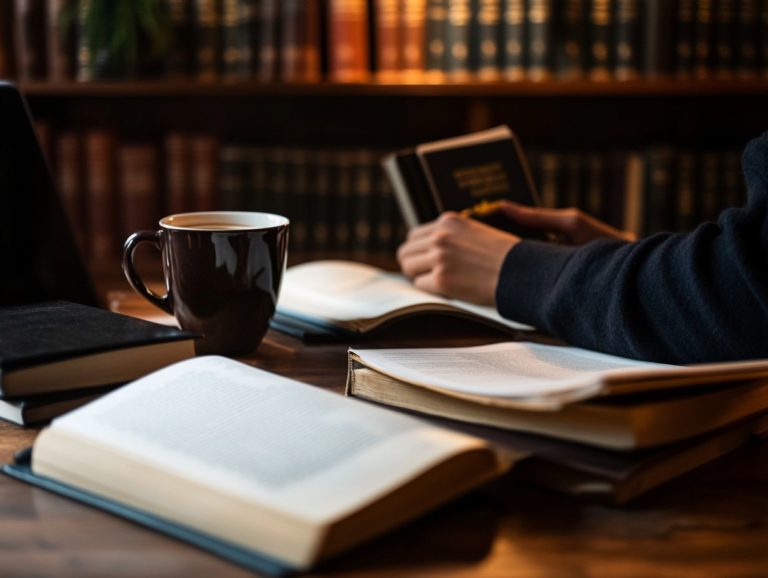How to Protect Your Creative Works?
You need to protect your creative work with intellectual property.
Whether you re an artist, writer, inventor, or entrepreneur, understanding the intricacies of intellectual property empowers you to navigate the complex realms of copyright, trademarks, and patents.
This guide outlines the protective measures available and provides practical steps for registering and enforcing your rights. It also clarifies common misconceptions.
Understanding the digital age’s challenges is crucial for safeguarding your work. You ll come to realize why protecting your creative works is more critical than ever.
Continue reading to equip yourself with the knowledge necessary to defend your innovations.
Contents
- Key Takeaways:
- Understanding Intellectual Property
- Types of Intellectual Property Protection
- Copyright, Trademark, and Patent
- Steps to Protect Your Creative Works
- Common Misconceptions about Intellectual Property
- Protecting Your Creative Works in the Digital Age
- Frequently Asked Questions
- What is the importance of protecting my creative works?
- How can I protect my creative works?
- Do I need to register my creative works to protect them?
- What should I do if someone has copied my creative work?
- How can I prevent others from stealing my creative works?
- What should I do if I want to sell my creative works?
Key Takeaways:
- Register your creative works to establish legal ownership and protection.
- Understand the different types of intellectual property protection, including copyrights, trademarks, and patents.
- Enforce your rights against infringement to protect your creations.
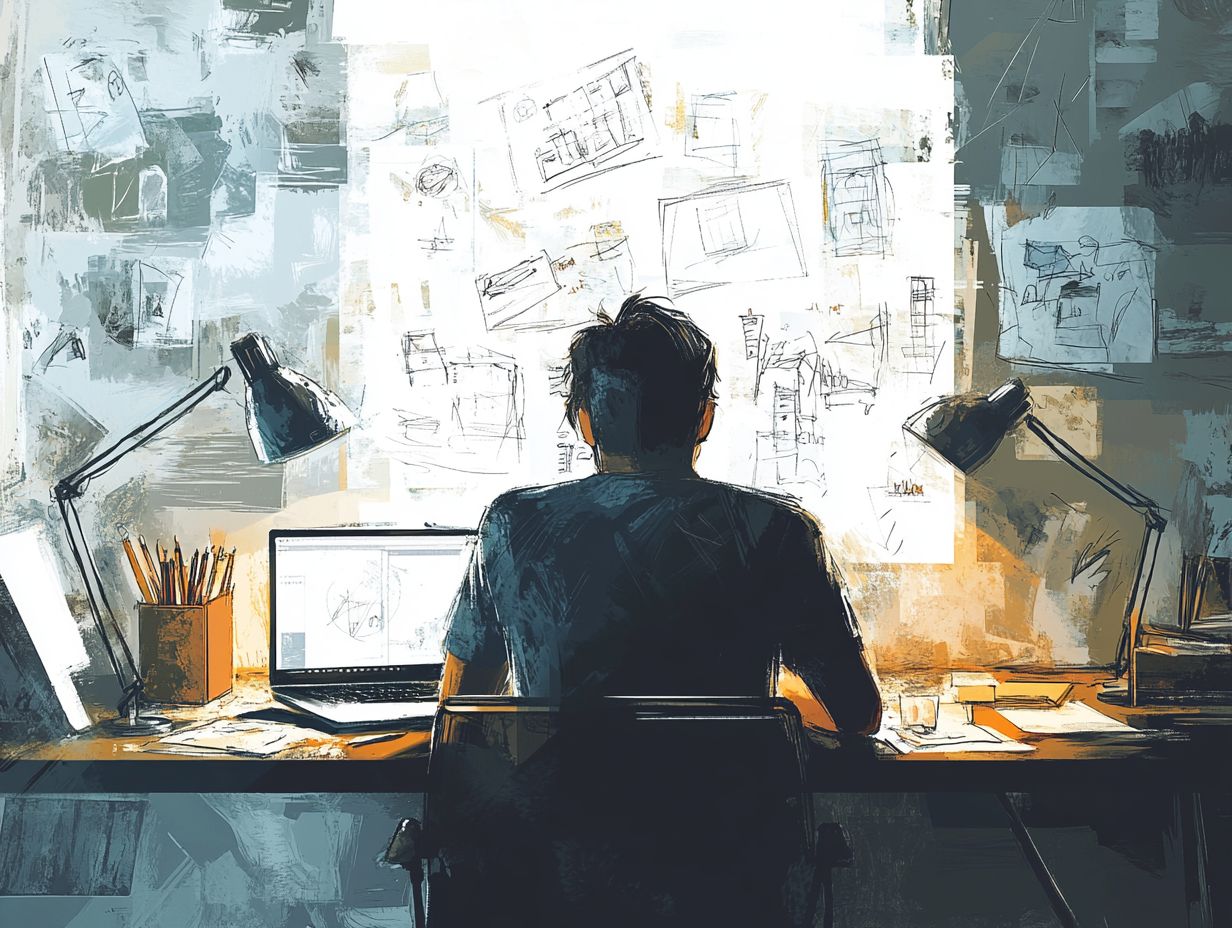
Understanding Intellectual Property
Intellectual property refers to legal rights that protect creations of the mind. It is vital for safeguarding the rights of creators and innovators in today s intricate landscape.
In a world where original works like artistic creations, literary pieces, or digital content play a pivotal role in economic development and cultural heritage, this knowledge is crucial.
Intellectual property encompasses a range of legal frameworks tailored to protect creative expression. This ensures that authorship is acknowledged and rewarded, fostering innovation across creative industries.
By understanding these distinctions, you gain avenues for legal recourse in cases of infringement.
Defining Creative Works and Their Protection
Creative works whether literary masterpieces, stunning artworks, or captivating musical compositions are your expressions of imagination and creativity, automatically protected by copyright law as soon as they come into existence.
This protection ensures you receive recognition for your authorship and retain control over how your work is reproduced and distributed.
This legal framework embraces various creative forms, from novels and paintings to songs and architectural designs.
As soon as your original work is fixed in a tangible medium be it written, recorded, or otherwise expressed copyright protection kicks in. This empowers you to assert your rights boldly!
This system underscores the importance of individual authorship and equips you to defend your works against unauthorized use, duplication, or distribution.
It emphasizes the crucial role of intellectual property in nurturing innovation and creativity within society.
Types of Intellectual Property Protection
Intellectual property protection involves various legal tools, such as copyright, trademarks, and patents. Each serves a specific purpose and offers tailored protections for creative works and inventions.
By understanding these distinctions, you can effectively safeguard your innovations from unauthorized use and infringement, ensuring that your creative endeavors remain yours alone.
Start protecting your creative work today!
Copyright, Trademark, and Patent
Intellectual property encompasses the creations of the mind, like inventions, literary works, and symbols. Copyright, trademark, and patent are the three cornerstone forms of intellectual property protection. Each bestows unique rights upon you as a creator or inventor, allowing you to protect your original works, brands, and inventions from unauthorized use and infringement.
Copyright protects your artistic and literary works. It gives you control over how they are distributed and reproduced. For instance, if you re a novelist, you can prevent unauthorized copies of your book, ensuring that you reap the financial rewards of your creativity.
Trademarks protect the symbols, names, and slogans that set your company’s products apart. This distinction is vital for businesses aiming to cultivate brand loyalty. Think of how recognizable logos like Nike s swoosh or Apple s apple have become.
Patents offer you exclusive rights for your inventions, whether it’s groundbreaking technology or an innovative process. This prevents others from making, using, or selling your invention for a specified duration. If you re a tech developer, patenting a unique software algorithm can secure your competitive edge in the market. However, the patent process can be both time-consuming and costly.
Each form of protection plays a crucial role in fostering innovation and creativity across various fields. They ensure that your contributions are recognized and safeguarded.
Steps to Protect Your Creative Works
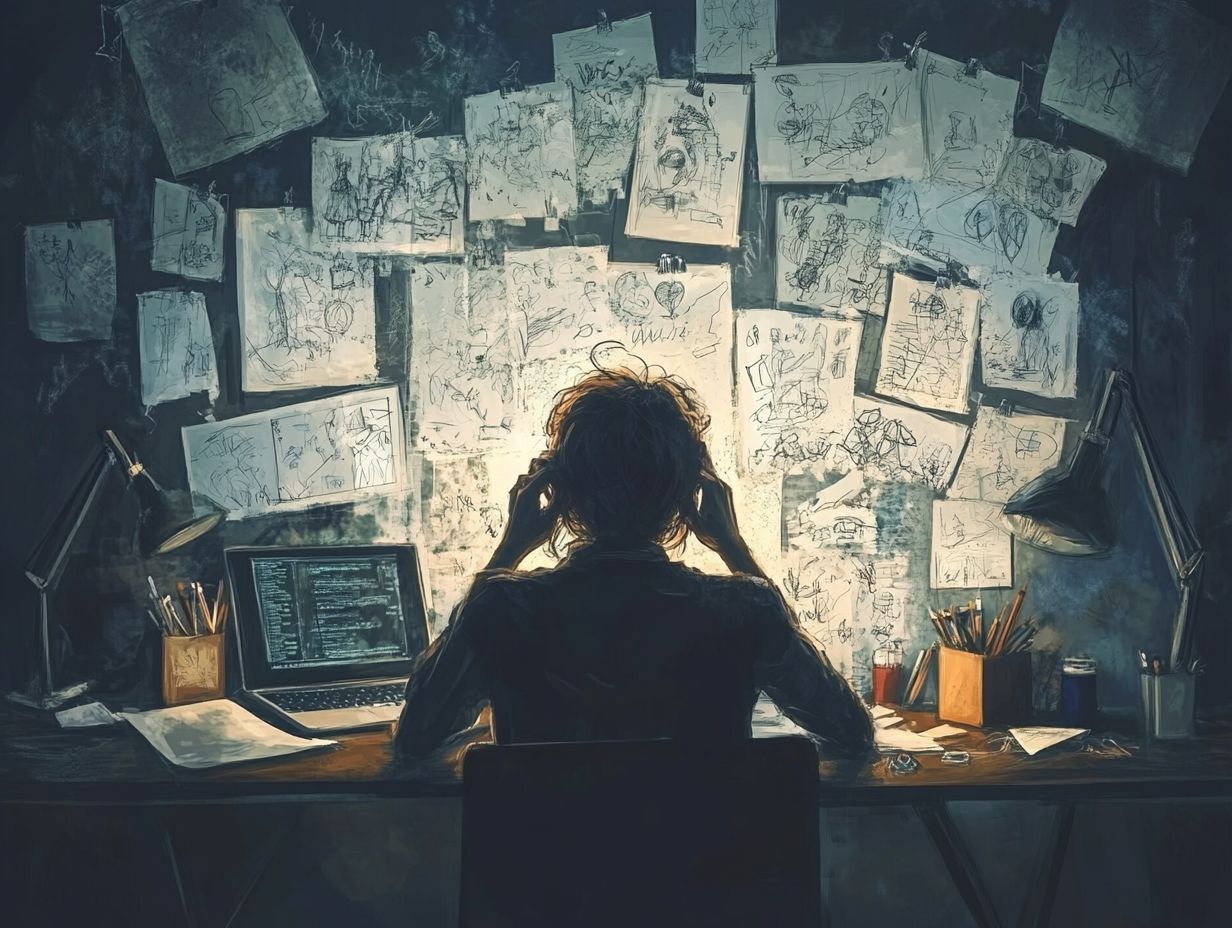
Protect your creative works! Taking these steps now secures your rights and boosts your confidence as a creator. Key steps include copyright registration, establishing clear ownership, and understanding your rights to pursue legal action in the event of infringement.
By implementing these measures, you ensure that your intellectual property is secure against unauthorized use. This allows your creativity to thrive without fear.
Registering Your Work
Registering your work with the Copyright Office is essential for securing copyright protection. It establishes a public record of your authorship and significantly enhances your ability to take legal action in case of infringement.
To start the registration process, gather your original works and complete the appropriate application form. You can submit it online or by mail. Copyright protection kicks in from the moment your work is created, but registering it offers additional perks, such as eligibility for set financial penalties and attorney’s fees if you face a legal dispute.
Having a public record is invaluable for asserting ownership. It serves as concrete evidence in court that can bolster your case during infringement claims. Ultimately, understanding and leveraging this process gives you the power to safeguard your intellectual property effectively.
Enforcing Your Rights
Enforcing your rights under copyright law is crucial to safeguarding your creative works from infringement. This may involve potential legal action and the pursuit of financial penalties through federal court if needed.
The journey typically begins with spotting unauthorized use, which might mean gathering evidence of the infringement think screenshots or copies to back your claims. Once you’ve pinpointed the infringer, it’s wise to consider sending a cease-and-desist letter, formally requesting that they halt the infringing activity.
If that doesn t work, you should consider taking the matter to federal court. In these cases, you can claim financial penalties that range from a predetermined minimum to a substantial maximum, depending on the nature of the infringement.
It’s vital to understand the role of federal courts in this process, as they hold the power to stop further violations and award damages. This ensures that your rights as a creator remain intact and respected.
Common Misconceptions about Intellectual Property
Common misconceptions about intellectual property can easily lead to confusion about copyright protection, the rights of creators, and the implications of unauthorized use.
It s essential for you to gain a clearer understanding of the framework that governs creative rights. By doing so, you can navigate this complex landscape with confidence and ensure that you respect the rights of others while safeguarding your own creations.
Myths and Facts about Protection
Myths about copyright can confuse creators. It’s crucial to know the facts about your rights.
Many creators artists, musicians, and writers often fall victim to misunderstandings. This confusion can lead to uncertainty about what they can legally protect.
For instance, you might think that posting your work online grants you copyright. In reality, formal registration offers significant legal advantages.
Similarly, you may believe that using snippets of popular works falls under fair use. Yet, there are nuanced criteria governing this concept. These misunderstandings can impact your confidence and hinder your ability to monetize your creations.
By demystifying these myths, you can navigate the complexities of intellectual property more effectively, ensuring your works are safeguarded.
Protecting Your Creative Works in the Digital Age
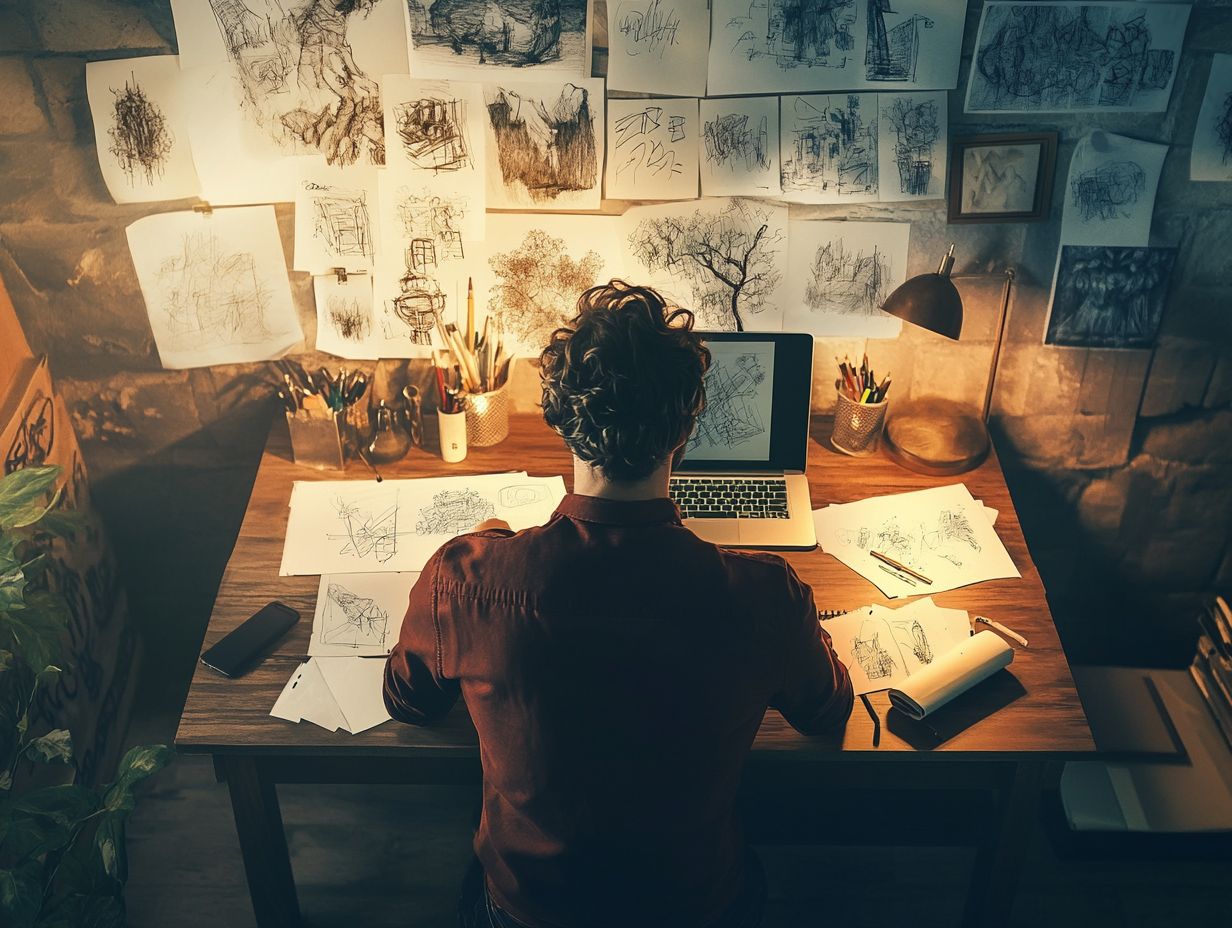
In the digital age, protecting your creative works is a must. The ease of sharing makes it easier for others to misuse your creations.
Challenges and Solutions
The challenges of protecting your creative works in the digital age are significant, marked by lots of people using your work without permission and the complexities of enforcement. However, implementing effective solutions like digital watermarking and monitoring can be instrumental in safeguarding your rights.
You often battle unauthorized use of your work. It s vital to use both legal measures and technology to protect yourself.
You can explore tools like blockchain for transparent ownership tracking, along with digital rights management software designed to combat piracy.
Engaging with online communities to raise awareness about these issues is crucial. Mutual support empowers you and fellow creators to take collective action. By integrating these strategies into your workflow, you can protect your intellectual property more effectively.
Importance of Protecting Your Creative Works
Protecting your creative works is vital. It ensures your rights and supports economic growth.
By safeguarding intellectual property, you empower yourself and your community to foster innovation and encourage artistic expression. This protection is essential for all creators, nurturing a vibrant ecosystem where fresh ideas can thrive.
A robust copyright system upholds the integrity of cultural heritage, enabling societies to preserve their narratives while inspiring future generations.
As the digital landscape evolves, understanding copyright’s significance becomes crucial for you. It ensures a delicate balance between access and protection in this dynamic environment.
Frequently Asked Questions
What is the importance of protecting my creative works?
Protecting your creative works gives you exclusive rights and prevents others from using them without your permission. It also helps you get proper credit for your work.
How can I protect my creative works?
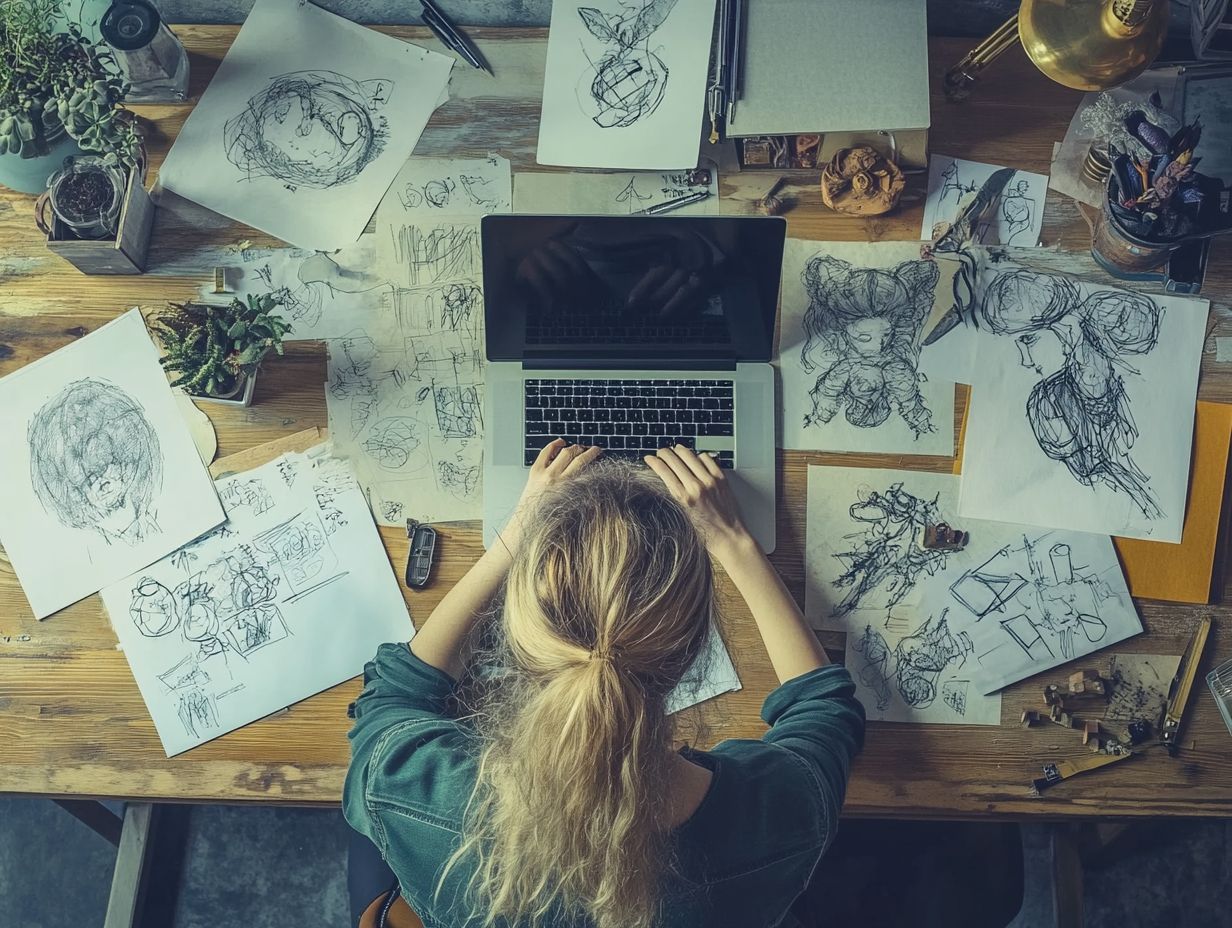
You can protect your creative works through copyright, patents, trademarks, and trade secrets. If you’re looking to expand your protection, understanding how to protect your IP internationally is crucial. Copyright is the best option for original works like books, music, and art.
Do I need to register my creative works to protect them?
Under the Copyright Act, your creative works are automatically protected at the moment of creation. You do not need to register them for this protection.
Registering your work with the US Copyright Office gives you extra legal protection. It also serves as proof of ownership.
What should I do if someone has copied my creative work?
If someone copied your work without permission, gather your evidence! You can send them a formal request to stop or consider taking them to court.
It’s smart to talk to a lawyer who knows about creative work.
How can I prevent others from stealing my creative works?
Protect your creations! Use a copyright notice, register your work, and consider visiting how to protect your IP internationally by adding watermarks or digital signatures.
What should I do if I want to sell my creative works?
Before selling your work, make sure it’s protected. Get the right copyrights or patents in place.
It’s also wise to work with a lawyer to create a licensing agreement so you know your rights are covered and you ll be paid fairly.

